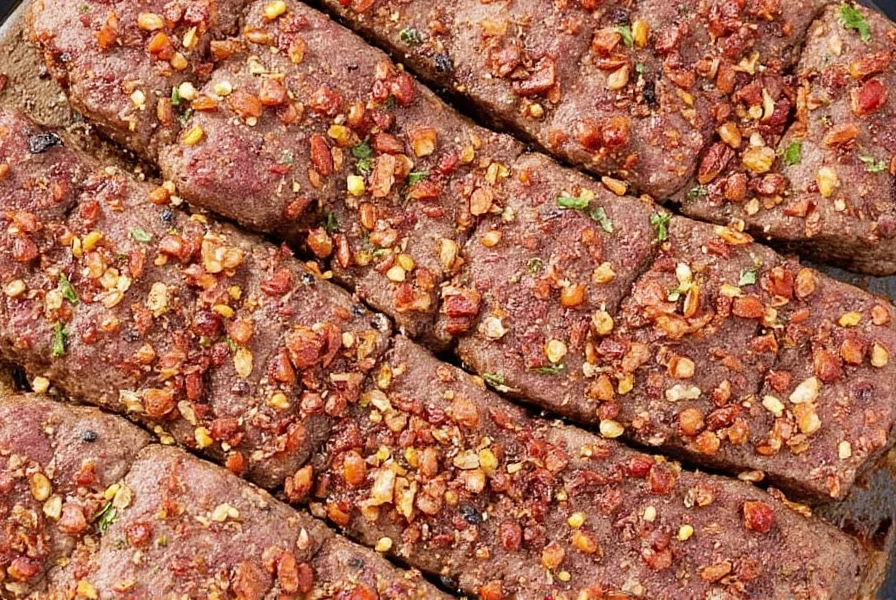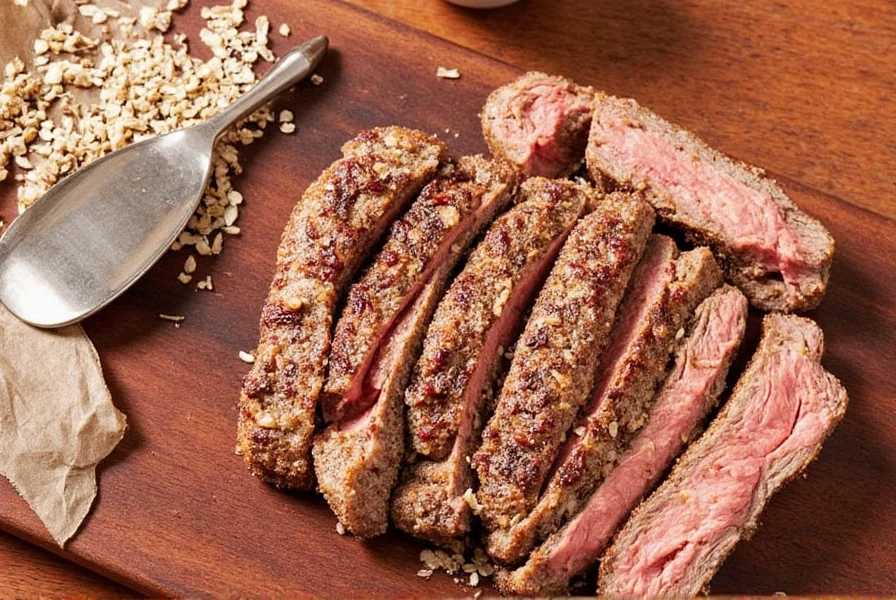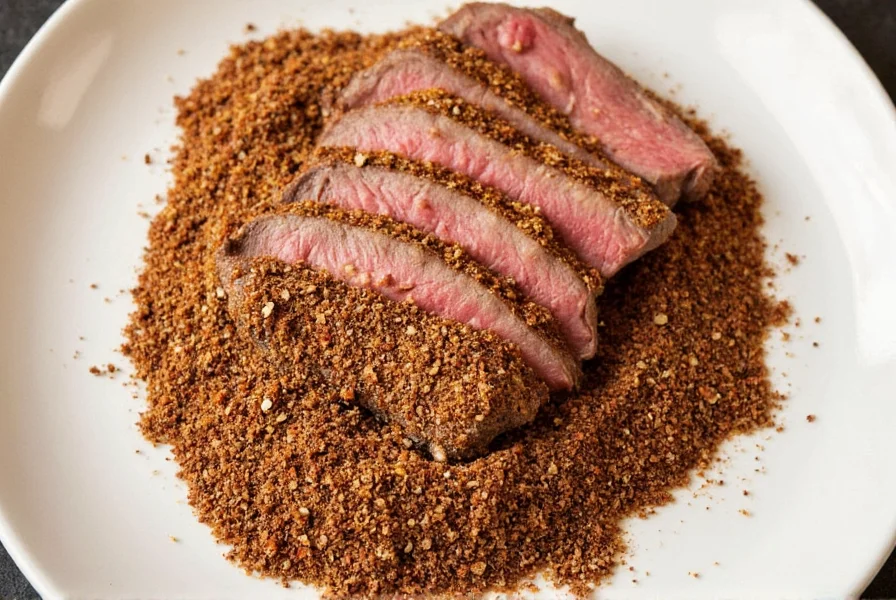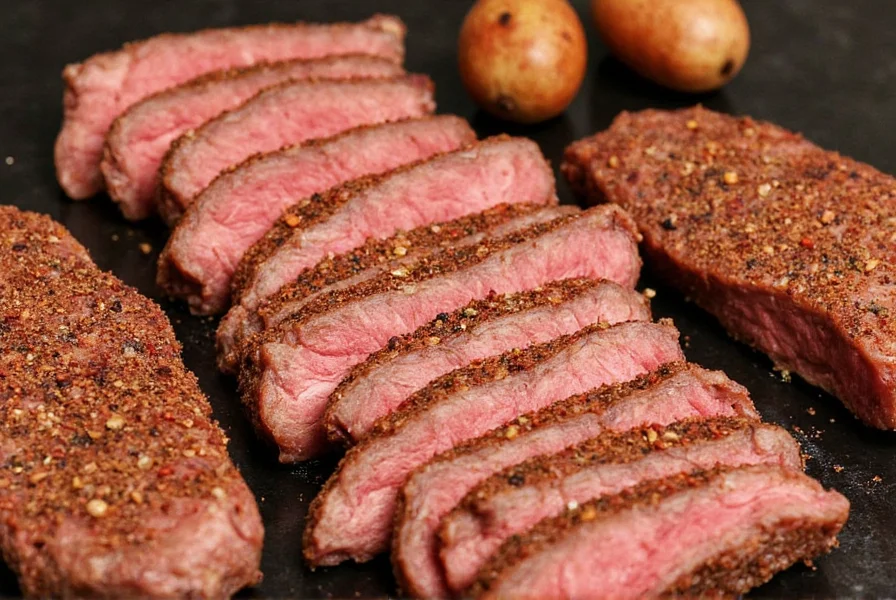Korean Beef Seasoning: Spicing Up Your Grill with Global Flavors
Table of Contents
- Introduction to Korean Beef Seasoning
- How Korean Beef Seasoning Fits into Global Spice Traditions
- Key Ingredients in Authentic Korean Beef Seasoning
- 5 Ways to Use Korean Beef Seasoning Like a Pro
- Buying Guide: Choosing the Best Korean Beef Seasoning
- DIY Korean Beef Seasoning Recipe
- Pairing Korean Beef Seasoning with Sides and Beverages
- Conclusion: Make Every Bite Bold with Korean Beef Seasoning
Introduction to Korean Beef Seasoning
If you've ever had bulgogi or grilled galbi, you know there's something magical about Korean beef seasoning. It’s not just spicy—it’s sweet, savory, smoky, and umami-rich all at once. This unique blend transforms ordinary cuts of meat into something extraordinary.

The beauty of Korean beef seasoning lies in its versatility. Whether you're grilling up a storm for a backyard barbecue or tossing some steak strips into a stir-fry, this spice mix brings bold flavor without overwhelming your taste buds. In this article, we’ll dive deep into the origins, ingredients, and best ways to use it—plus, how to pick the perfect bottle from your local market.
How Korean Beef Seasoning Fits into Global Spice Traditions
Korean cuisine may not be as globally dominant as Italian or Mexican when it comes to spice blends, but its influence is growing fast. Much like Japanese shichimi togarashi or Indian garam masala, Korean beef seasoning represents a balance between tradition and innovation.
| Spice Tradition | Core Flavor Profile | Primary Use | Notable Ingredients |
|---|---|---|---|
| Korean Beef Seasoning | Sweet, salty, umami, mild heat | Marinating beef (especially bulgogi) | Soy sauce, sesame oil, garlic, sugar, gochujang |
| Garam Masala | Earthy, warm, aromatic | Finishing spice in curries and stews | Cumin, coriander, cinnamon, cardamom |
| Shichimi Togarashi | Spicy, citrusy, nutty | Topping for noodles and soups | Chili pepper, sansho, seaweed, sesame seeds |
| Taco Seasoning | Smoky, earthy, slightly spicy | Dusting meats and vegetables | Paprika, cumin, chili powder, oregano |

What makes Korean beef seasoning stand out is its fusion of sweet and savory notes—a hallmark of Korean cooking. While many cultures lean heavily on salt or heat, Korea balances them with fermented elements and natural sugars for depth and richness.
Key Ingredients in Authentic Korean Beef Seasoning
To truly understand Korean beef seasoning, let’s break down what makes it tick:
- Soy Sauce: The backbone of the flavor. Adds saltiness and umami.
- Sugar: Often brown sugar or honey for a caramelized sweetness.
- Garlic: Freshly minced for pungency and aroma.
- Sesame Oil: Nutty and rich, adds fragrance and depth.
- Gochujang: Fermented red chili paste that gives it subtle heat and complexity.
- Pear Juice or Kiwi: Used in traditional recipes to tenderize the meat naturally.

Some store-bought versions might include MSG, preservatives, or artificial flavors, so always check the label if you prefer clean ingredients. Now let’s see how you can put this spice mix to work in your kitchen.
5 Ways to Use Korean Beef Seasoning Like a Pro
Korean beef seasoning isn’t just for marinating meat. Here are five creative—and delicious—ways to use it:
- Bulgogi Burgers: Mix ground beef with Korean beef seasoning before forming patties. Add kimchi and gochujang mayo for an authentic twist.
- Seasoned Popcorn: Sprinkle lightly over freshly popped popcorn for a savory snack with flair.
- Rice Stir-In: Add a spoonful to fried rice for instant flavor boost.
- Vegetable Marinade: Use it on portobello mushrooms or eggplant for a vegan-friendly version of bulgogi.
- Egg Bites: Mix into scrambled eggs or shakshuka base for an umami kick.

Tip: Always taste before salting! Since most Korean seasonings already contain soy sauce, you may not need extra salt in your dish.
Buying Guide: Choosing the Best Korean Beef Seasoning
When shopping for Korean beef seasoning, look for quality ingredients, brand reputation, and personal preference. Below is a breakdown of popular options:
| Brand | Flavor Profile | Ingredients | Best For | Price Range |
|---|---|---|---|---|
| Maangchi Korean BBQ Seasoning | Traditional, balanced, slightly sweet | No MSG, gluten-free | Classic bulgogi lovers | $9–$12 per bottle |
| Samyang Bulgogi Seasoning | Mild, easygoing, family-friendly | Contains MSG, preservatives | Quick weeknight meals | $6–$8 per packet |
| Kikkoman Korean-Style BBQ Marinade | Savory, slightly tangy, moderate saltiness | Ready-to-use liquid marinade | Convenience-driven cooks | $4–$6 per bottle |
| Han Jung Maek Bulgogi Seasoning | Strong umami, slightly spicy, complex | Authentic, restaurant-style flavor | Pro chefs and serious foodies | $10–$15 per jar |

Things to Watch Out For:
- High Sodium Content: Check labels if you’re watching your salt intake.
- Artificial Preservatives: Look for “no added MSG” if preferred.
- Shelf Life: Once opened, store in the fridge to preserve freshness and flavor.
DIY Korean Beef Seasoning Recipe
Want full control over your spices? Try making your own Korean beef seasoning at home. It’s easier than you think!
Ingredients:
- ¼ cup soy sauce
- 2 tbsp brown sugar
- 2 tbsp sesame oil
- 2 cloves garlic, minced
- 1 tbsp gochujang (optional for heat)
- 1 tsp black pepper
- 1 tbsp kiwi puree or pear juice (for tenderizing)
Instructions:
- In a bowl, combine soy sauce, brown sugar, and sesame oil.
- Add garlic, gochujang, and black pepper.
- Mix well until sugar dissolves.
- Stir in kiwi or pear juice last.
- Marinate your beef for at least 1 hour (overnight is better).

Store any unused portion in the fridge for up to two weeks. Double the batch and freeze half for future use!
Pairing Korean Beef Seasoning with Sides and Beverages
Great seasoning deserves great company. Here’s how to pair Korean beef seasoned dishes with sides and drinks that elevate the experience:
Side Dishes:
- Kimchi Fried Rice
- Steamed Jasmine Rice
- Grilled Vegetables (zucchini, bell peppers)
- Spicy Cucumber Salad
Drinks:
- Soju or Makgeolli: Traditional Korean rice wines that complement the richness.
- Iced Green Tea: Balances the saltiness and cleanses the palate.
- Lemon Soda: A refreshing alternative that cools down the spiciness.

Don’t forget the banchan—small side dishes like pickled radish or seasoned spinach really complete the meal.
Conclusion: Make Every Bite Bold with Korean Beef Seasoning
Korean beef seasoning is more than just a marinade; it’s a gateway to global flavor adventures right from your kitchen. Whether you buy it or make it yourself, this versatile blend adds depth, richness, and a touch of Korean soul to your meals.

From burgers to popcorn to veggie bowls, there’s no shortage of ways to enjoy this uniquely satisfying spice mix. So next time you fire up the grill—or even just whip up dinner on a weeknight—reach for Korean beef seasoning and take your taste buds on a flavorful journey across continents.











 浙公网安备
33010002000092号
浙公网安备
33010002000092号 浙B2-20120091-4
浙B2-20120091-4